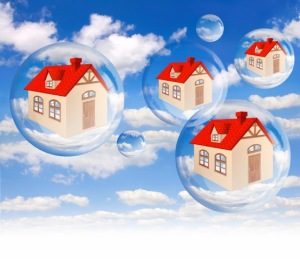U.S. new-home construction jumped to a nine-year high in October as an outsized advance in the number of apartment projects accompanied a strong pickup for single-family housing.
Residential starts surged 25.5 percent to a 1.32 million annualized rate, the fastest since August 2007 and exceeding the highest projection in a Bloomberg survey, a Commerce Department report showed Thursday. The increase from September was the biggest since July 1982. Multifamily homebuilding was up a whopping 68.8 percent.
The figures indicate the housing market was making greater progress a month before a jump in mortgage rates. While increased hiring and healthier finances have been driving demand, a sustained pickup in borrowing costs threatens to discourage first-time buyers and become a hurdle for the industry.
“New-home sales have good momentum,” Jim O’Sullivan, chief U.S. economist at High Frequency Economics in Valhalla, New York, said before the report. “The economy continues to improve and employment is rising, and those are pluses.”
Still, “the jump in mortgage rates is not going to help,” he said.
The median forecast of economists surveyed by Bloomberg was 1.16 million, with estimates ranging from 953,000 to 1.26 million, according to the Bloomberg survey.
Single-family house construction rose 10.7 percent to an 869,000 rate, the highest since October 2007.
Multifamily Homes
Work on multifamily homes, such as townhouses and apartment buildings, jumped to an annual rate of 454,000 from 269,000 a month earlier. Data on these projects, which have led housing starts in recent years, can be volatile.
All four regions posted gains in housing starts last month, the report showed.
Permits, a proxy for future construction, increased 0.3 percent to a 1.23 million annualized rate. They were projected to fall to a 1.19 million pace, according to the survey median.
The National Association of Home Builders/Wells Fargo index of homebuilder sentiment in November held near the highest level of the year, figures showed on Wednesday. Readings greater than 50 mean more respondents reported market conditions as good. A measure of prospective buyer traffic rose.
With investors anticipating faster expansion and inflation from President-elect Donald Trump’s policies, the yield on the U.S. 10-year note — a bellwether of changes in mortgage rates – – has jumped in the past week, followed by an advance in housing loan costs.
A sustained surge could further discourage first-time purchases at a time when rising values are hurting affordability. The back-up in rates would subdue residential construction, which has failed to contribute to growth for two consecutive quarters.
